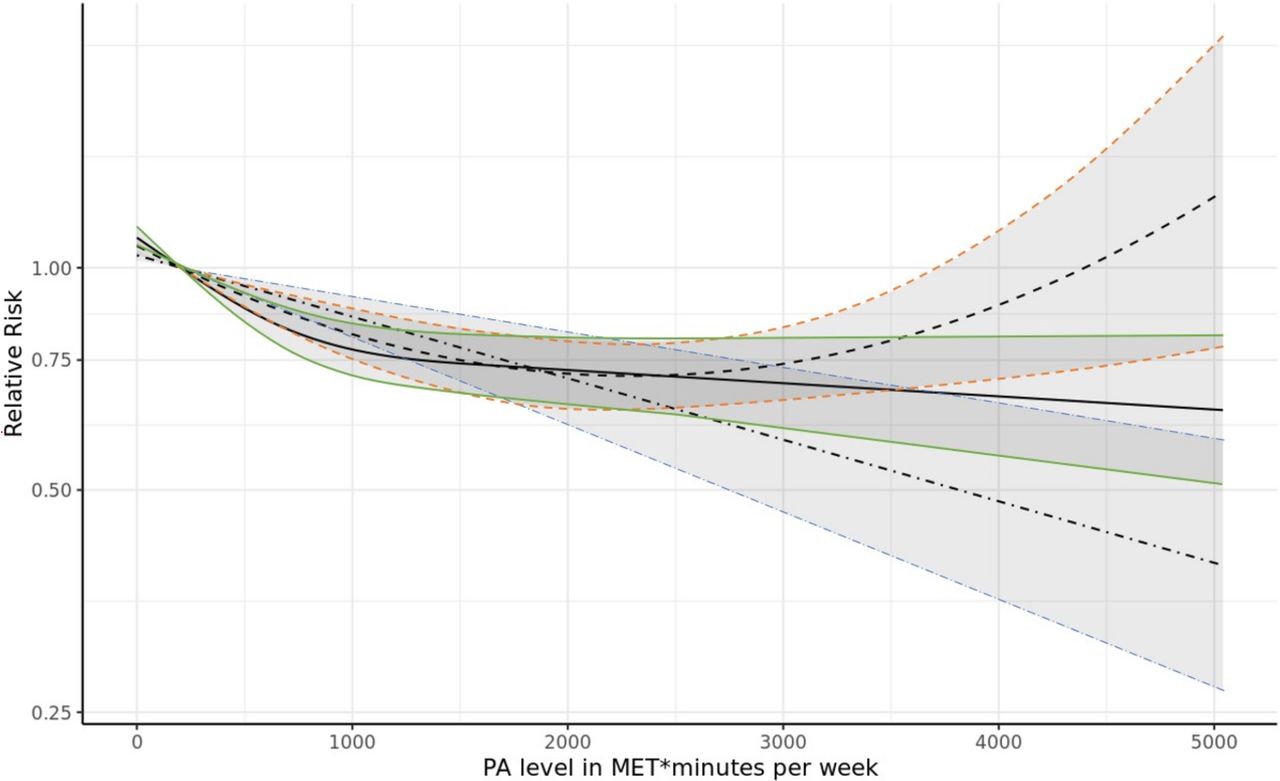Part of the BJSM’s #KnowledgeTranslation blog series
Physical activity (PA) is associated with a decreased incidence of dementia, but much of the evidence comes from short follow-ups prone to reverse causation. This meta-analysis in BJSM investigated the effect of study length on the association. Here’s a summary of the study, written by the authors themselves!
Why is this study important?
Physical activity has repeatedly been associated with a lower incidence of dementia. Many earlier studies have been from elderly cohorts with only some years of follow-up. Because dementia takes at least two decades to develop, physical inactivity in aged cohort studies with short follow-ups may be due to dementia instead of the other way around. We set out to gather prospective observational follow-up studies of the association of physical activity and dementia to examine how the association is affected by study length, study quality and baseline age of the cohort. In this blog, we explain how we went about it, what we found and how we interpret our findings. The study was conducted in collaboration between the Institute for Molecular Medicine of Finland (FIMM) of University of Helsinki and the University of Jyväskylä.
What did we do?
We searched six databases for prospective observational studies addressing the association of physical activity and all-cause dementia, Alzheimer’s disease or vascular dementia. We included only adult cohorts with at least one year of follow-up. The study had to measure cognitive performance at baseline or the cohort had to be middle-aged to exclude study results prone to be affected by preclinical dementia. We found over 16 000 studies of which 58 fulfilled the inclusion criteria.
We integrated the results from the found studies to find out whether physical activity is associated with decreased incidence of all-cause dementia, Alzheimer’s disease and vascular dementia. We developed a quality assessment tool to be able to assess the quality in these studies with more transparent criteria that address specifically the association of physical activity and dementia. The studies were rated according to these criteria as good, moderate or low quality. We were especially interested in how the length of the follow-up, baseline age of the study cohort and study quality affect the association. In addition, we assessed possibility of publication bias.
What did we find?
To our surprise, we found very few high-quality studies (four all-cause dementia studies, three Alzheimer’s disease studies and one vascular dementia study). The criteria in which most of the studies failed to reach high quality were representativeness of the cohort (many cohorts did not even present the participation rate or follow-up rate) and study length.
In over 250 000 participants, physical activity was associated with a decreased incidence of dementia. Belonging to other category than the most inactive one in each study was associated with 20% lower risk of all-cause dementia, 14% lower risk of Alzheimer’s disease and 21% lower risk of vascular dementia than the most physically inactive category. Neither study length, the baseline age of the cohort nor study quality affected the association. Physical activity was associated with a decreased incidence of all-cause dementia and Alzheimer’s disease also in follow-ups longer than 20 years and in cohorts aged less than 55 years at baseline. The data for vascular dementia was scarcer. The association of physical activity and Alzheimer’s disease was not significant but the statistical power to detect an association was low with very few high-quality studies.

We detected only few studies with baseline in midlife that controlled the analyses for cognition at baseline. Many studies with baseline in older age did control for baseline level of cognition but with screening tools that are known to have a considerable ceiling effect. Funnel plots showed that some smaller studies of physical activity and all-cause dementia or Alzheimer’s disease may have been left unpublished.
What are the take-home points?
The evidence from cohort studies supports physical activity as a modifiable protective factor of all-cause dementia and Alzheimer’s disease rather than being due to reverse causation. Physical activity is associated with a decreased incidence of all-cause dementia and Alzheimer’s disease also in long over 20-year follow-ups. Data for the association of physical activity with vascular dementia was scarcer. More research is, however, needed, because some publication bias may be present, observational studies cannot prove causality and controlling for baseline level of cognitive performance was not optimal.
This was written by the authors of the original piece: https://bjsm.bmj.com/content/early/2022/03/14/bjsports-2021-104981